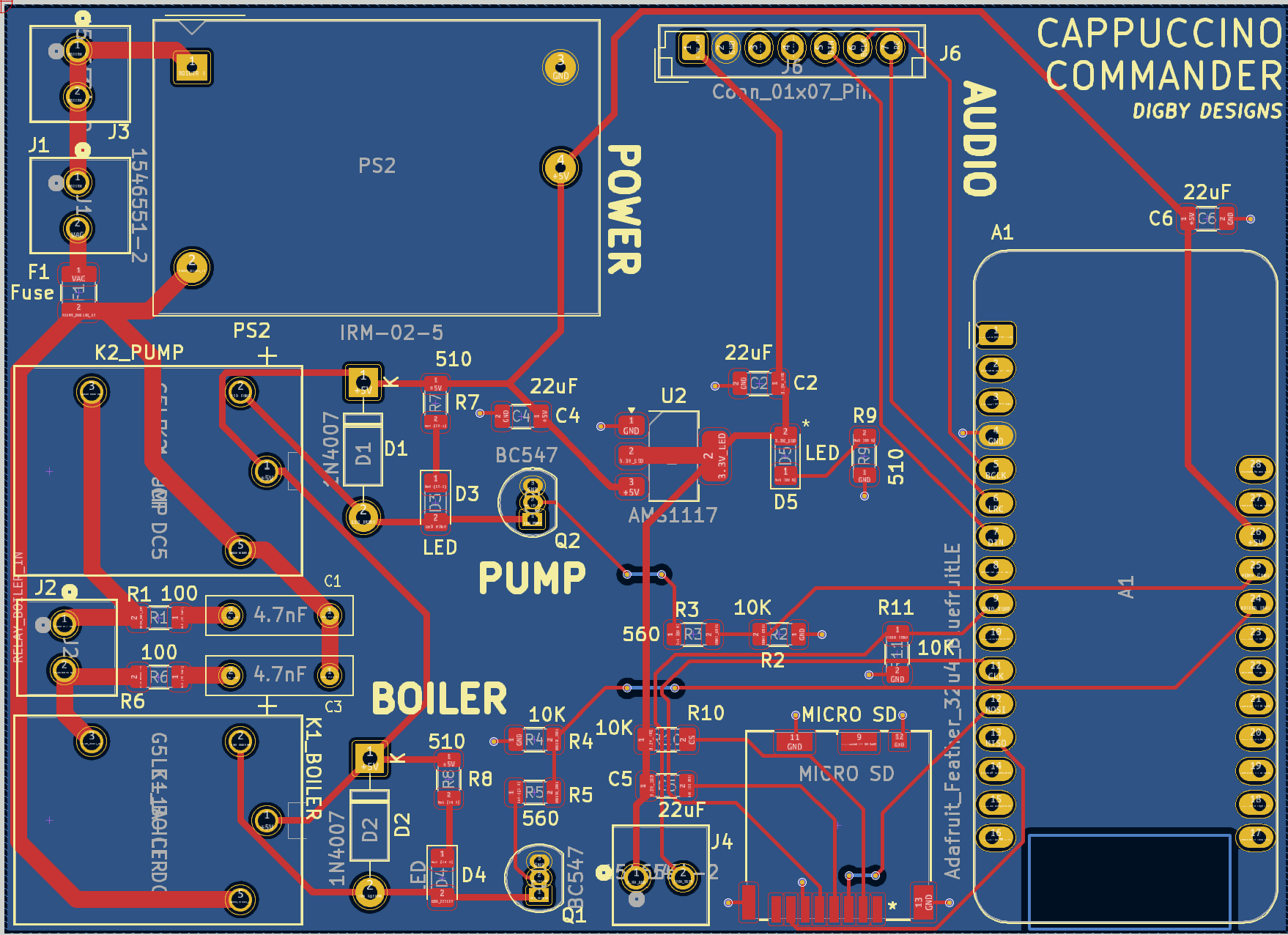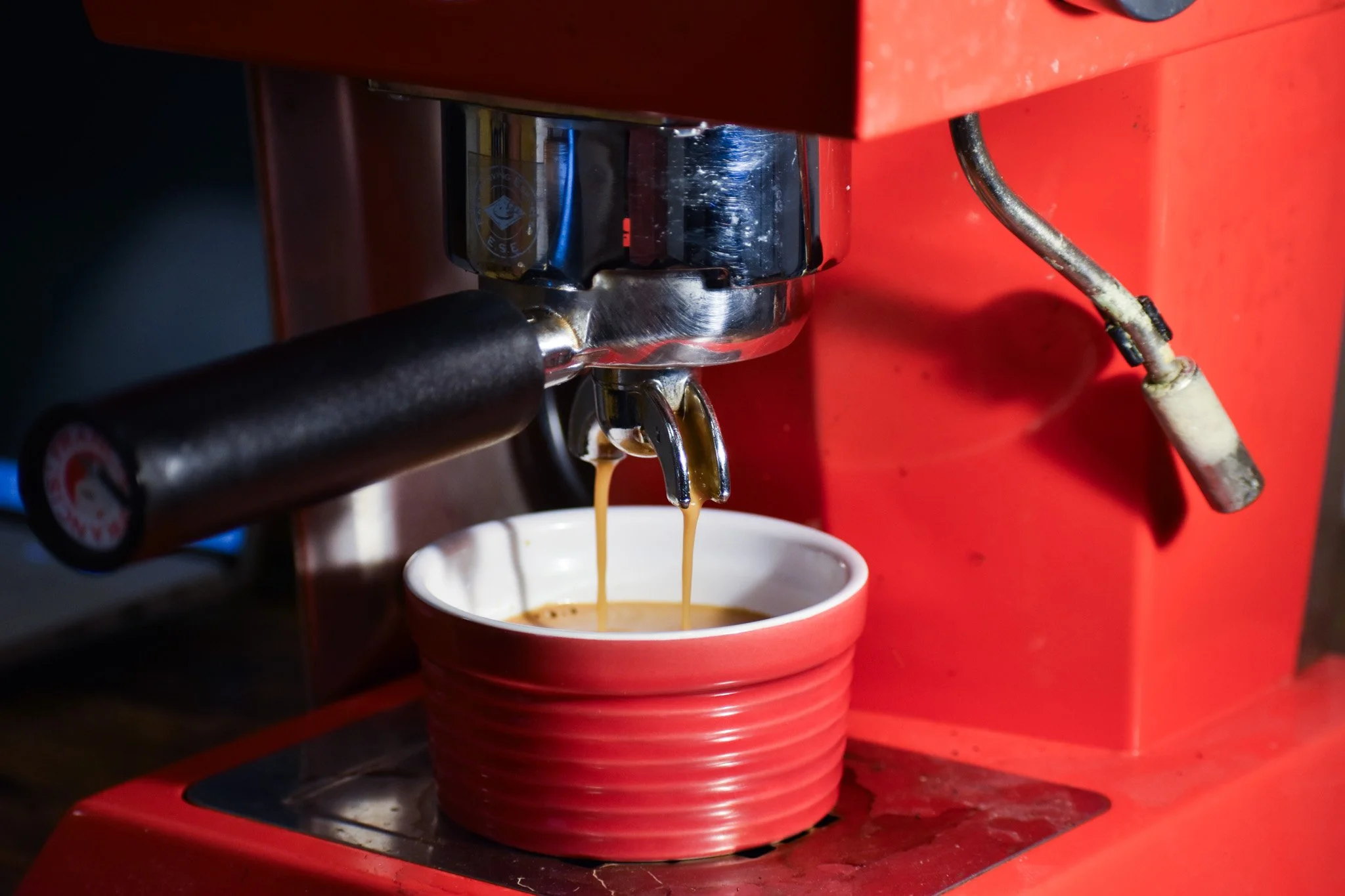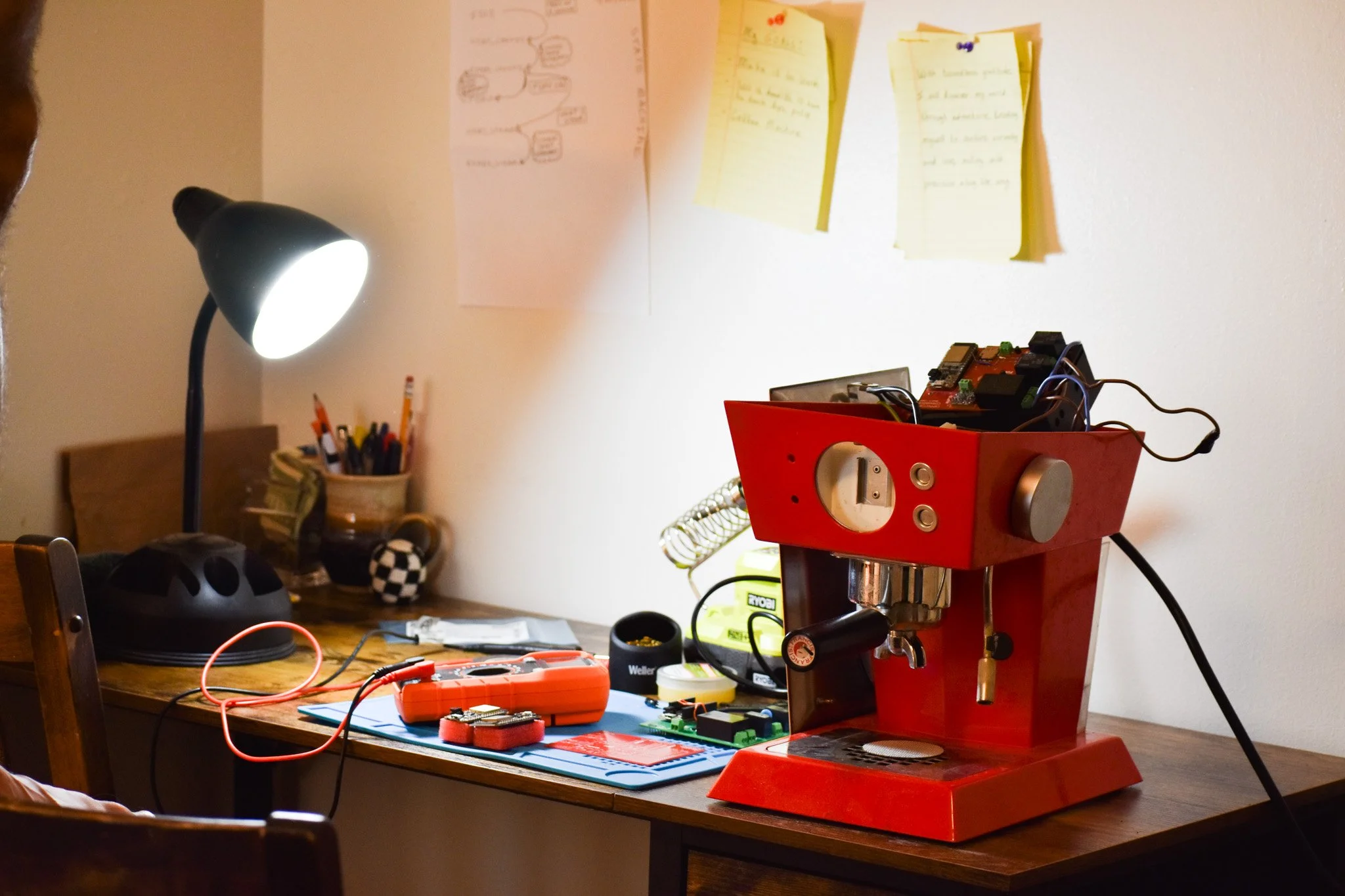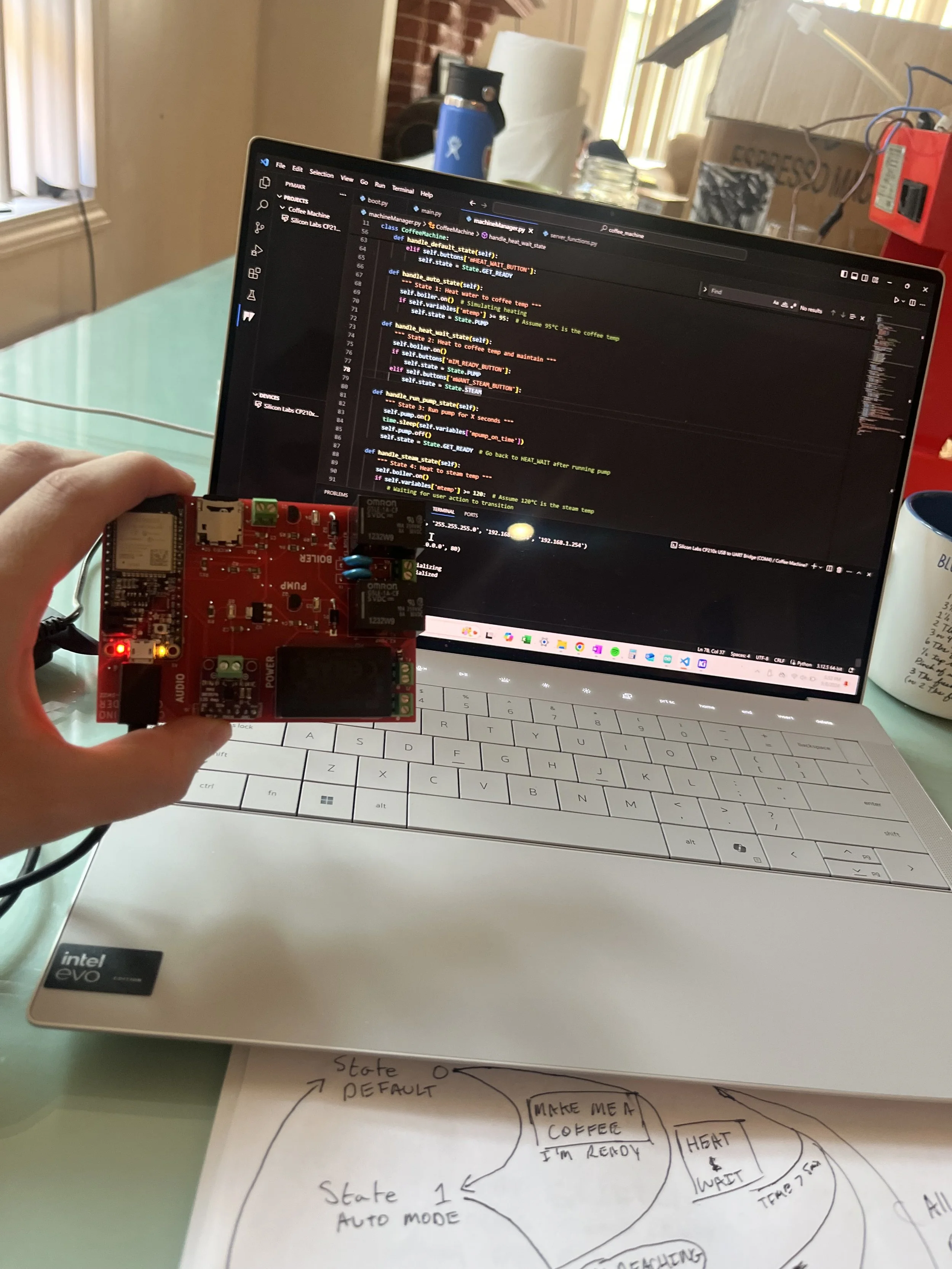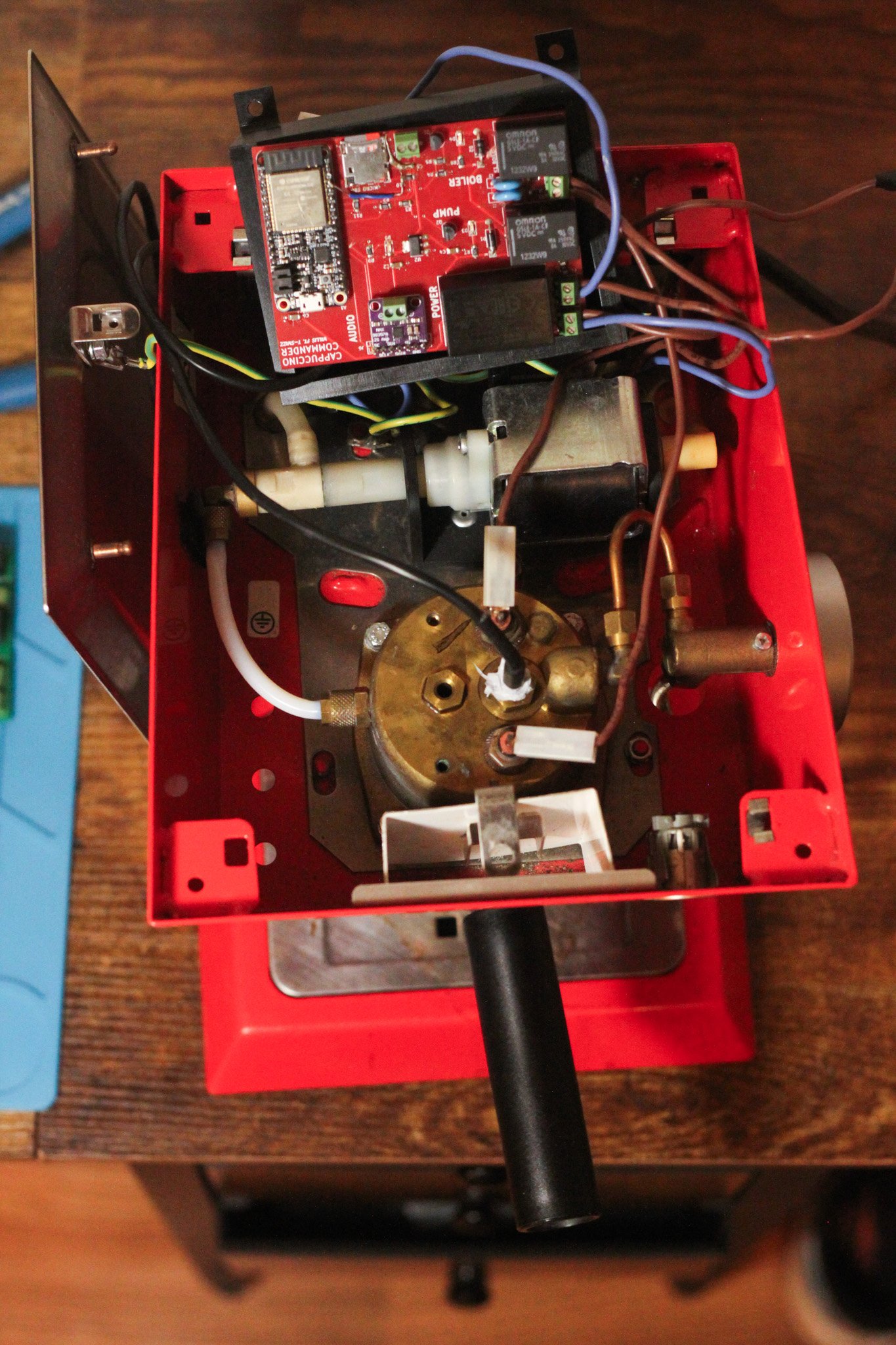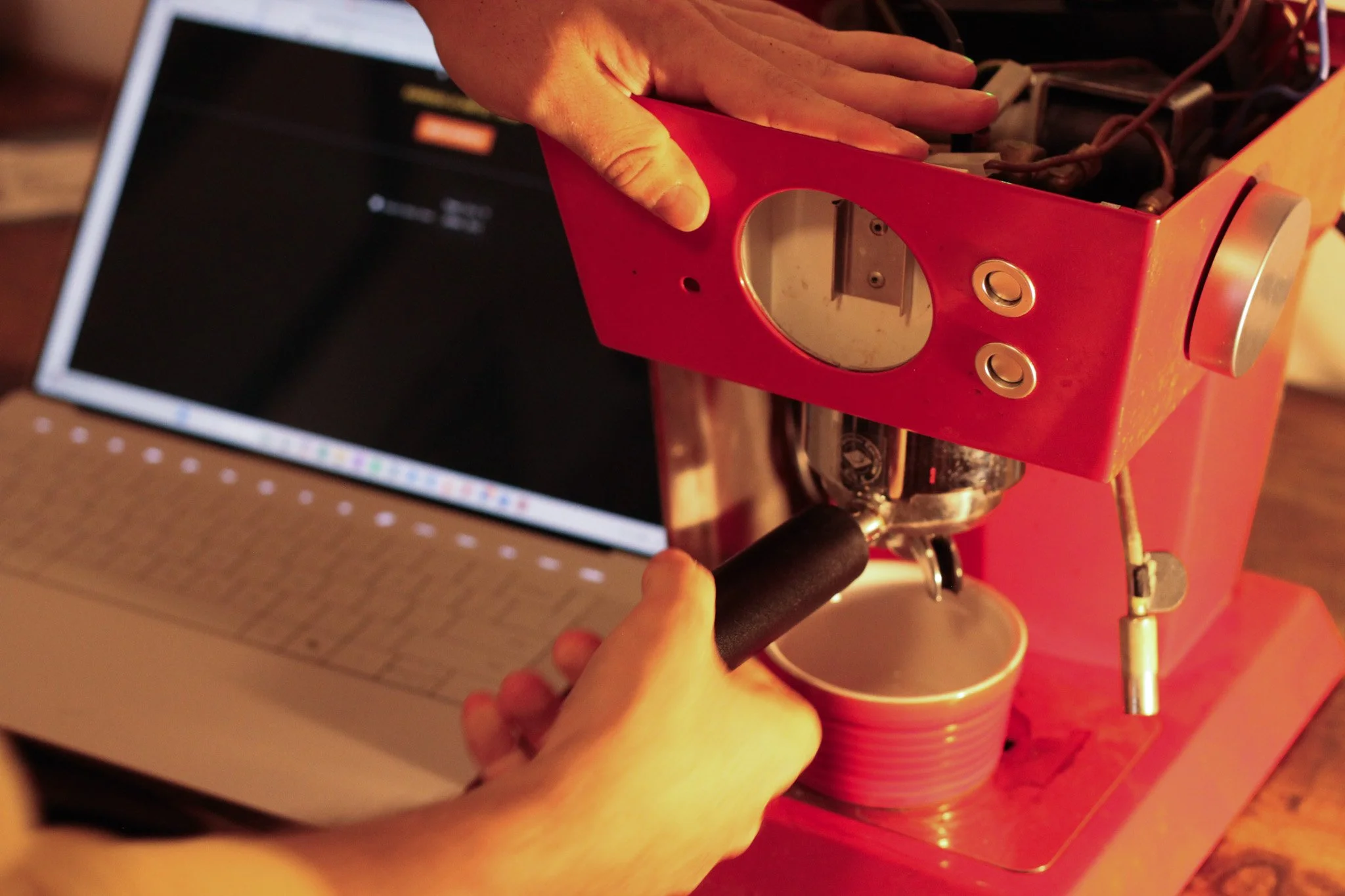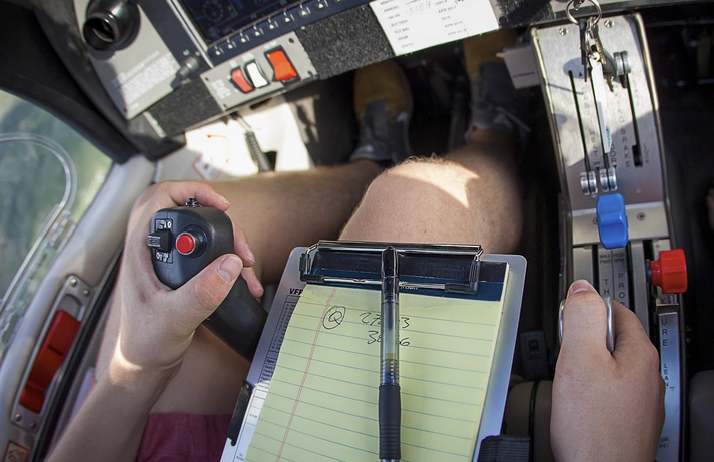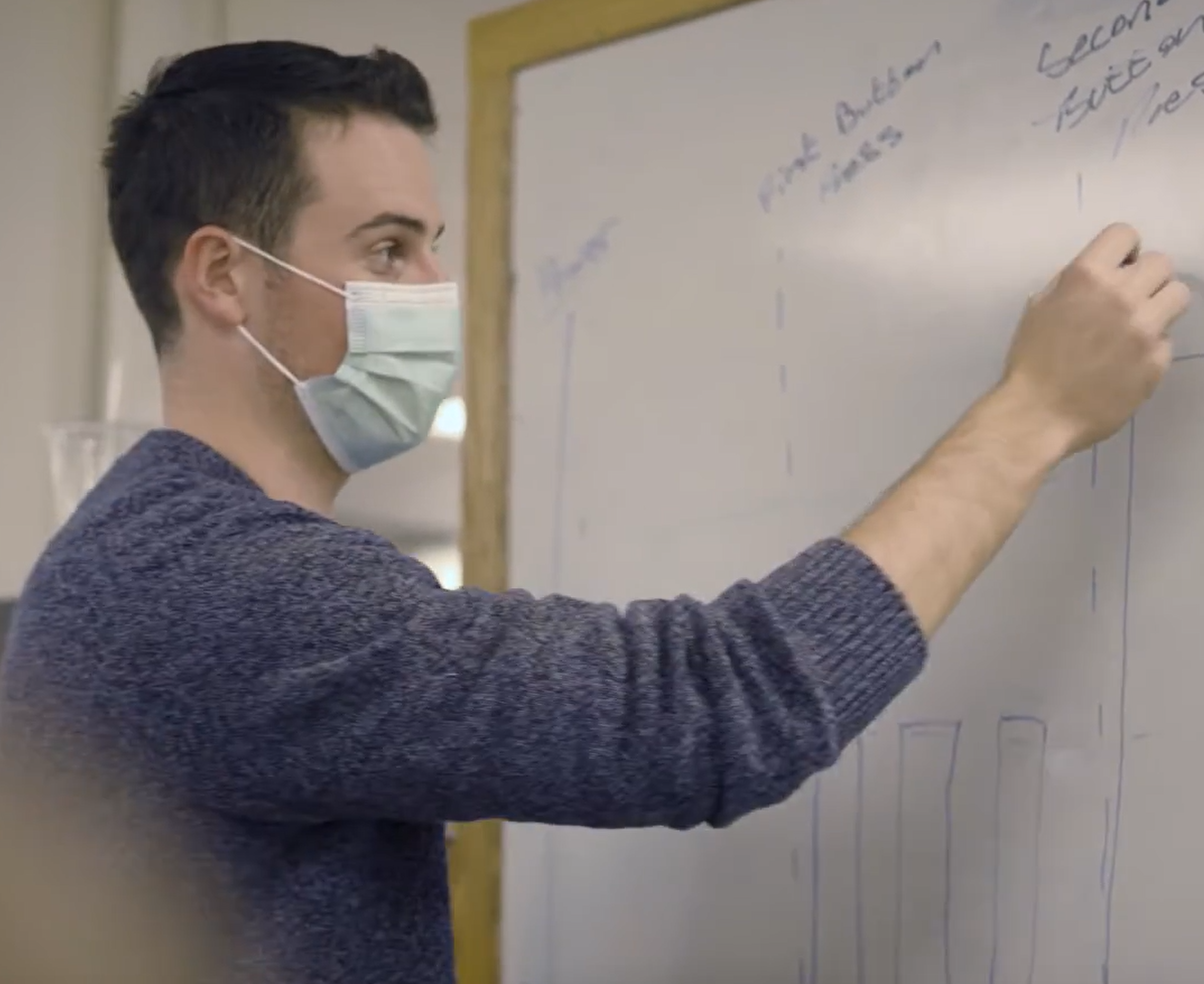the coffee problem
It all began in The Submarine, our affectionate name for the house I share with a rotating cast of Seattle’s quirkiest runners, chefs, engineers, outdoor enthusiasts (population: five to seven, depending on leases and life crises).
In a dim, cluttered corner of our kitchen sat a once-beautiful espresso machine. Dusty. Silent. Long forgotten. A relic of better caffeinated days. All that remained were a few sad, flickering lights. No heat. No pump. No espresso. A ghost.
But we saw potential.
Armed with chalk, a dream, and the highly questionable support of my roommates, I set out to resurrect this fallen champion. Late into the night, we developed our mission:
The machine shall pull a decently good espresso shot.
The machine shall make us smile.
The machine shall not blow up.
Act I: Hubris and Relays
I dove in. System architecture sketches. Diagnosing dead components. Sourcing parts. Bread-boarding and designing the first custom circuit board iteration. In this stage, I blew a few circuit breakers, shocked myself, and did more damage than fixing as I learned the circuitry.
After receiving the first spin of circuit boards, I quickly realized the relays didn’t switch because I, very cleverly, bought relays with a switching voltage twice what I could supply, a gentle reminder to check the datasheet a third time.
I took lessons learned from the first design, "The Bean Counter" and poured my heart into revision two, "Cappuccino Commander".
Act II: The Software Strikes Back
Most significant hardware woes behind me, I waded into software. My first attempt was... let’s call it ambitious. The state machine was like a choose-your-own-adventure written by a squirrel. The server crashed, buttons froze, espresso stopped mid-shot, and no one smiled.
I started from scratch. With some helpful code reviews provided by software developer friends, I landed on final state machine diagrams and a better approach to asynchronous server and control system design.
Act III: Victory via Facebook Marketplace and Capacitors
With clean software and a decent hardware base, I could finally tackle the real problems—thermal inertia, brownouts, and inconsistent pressure. I added filter capacitors, thermal paste, tuned the heat-up curves, and hunted down a decent grinder on Facebook Marketplace. Toss in a puck screen or two from Amazon and…
Boom. Espresso.
Not just any espresso. A consistent, decently good espresso that makes us smile every morning. And best of all—it hasn't blown up yet!
Will AT Work
